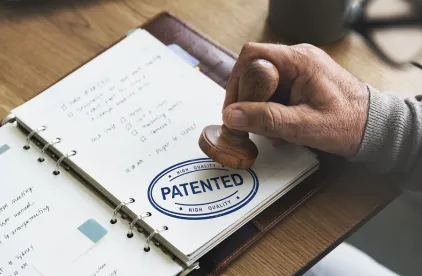In a rare reversal without remand, the US Court of Appeals for the Federal Circuit vacated a Patent Trial and Appeal Board (PTAB or Board) decision finding claims of a challenged patent not unpatentable in an inter partes review (IPR). Homeland Housewares, LLC v. Whirlpool Corporation, Case No. 16-1511 (Fed. Cir., Aug. 4, 2017) (Dyk, J) (Newman, J, dissenting). The panel majority explained that the PTAB failed to construe a key claim term despite the fact that the parties disagreed as to the meaning of that term. The dissent argued that the majority construed the claims too broadly and that the PTAB’s decision was properly supported by substantial evidence.
Homeland petitioned for IPR, challenging all claims of a Whirlpool patent directed to a blender having crushed ice functionality. The patent described a blender providing a pre-programmed, automated blending cycle designed to blend items “quickly and reliably—by repeatedly dropping to a speed slow enough to allow the blender contents to settle around the cutter assembly, and then returning to a [higher] speed suitable for processing the contents.”
The challenged claims recited “automatically controlling a rotational speed of the cutter assembly to effect a pulsing of the speed of the cutter assembly . . . wherein each pulse comprises . . . a deceleration phase, where the speed of the cutter assembly is reduced from the operating speed to a predetermined settling speed indicative of the items in the container having settled around the cutter assembly, which is less than the operating speed and greater than zero.”
Whirlpool’s patent admitted, however, that it was well known for a user to manually pulse between a high speed and a low speed to achieve a pattern of movement that introduces the entire contents of the blender reservoir into contact with the rotating blades for efficient mixing.
In its IPR petition, Homeland asserted a prior art patent that described manual pulsing of a blender motor at high and then low speeds to permit the contents being blended to fall back to the region of the cutting knives. That prior patent also taught that the blender could be programmed to automatically accomplish predetermined blending functions and routines. One of the disclosed routines, for powdered drinks, included operating the blender first at a high speed, then causing the blender motor to “ramp down to low speed for 5 seconds” followed by “ramp[ing] up for 15 seconds.”
In its final written decision, the PTAB declined to provide a construction of “settling speed” and concluded that Homeland had not shown, by a preponderance of the evidence, that any claim of the challenged patent was anticipated or rendered obvious. Homeland appealed.
The Federal Circuit found that the PTAB erred by failing to construe the claim term “settling speed” since the parties disputed the meaning of that term. Citing the Court’s 2008 decision in O2 Micro Int’l v. Beyond Innovation Tech, the majority explained that when the parties raise an actual dispute regarding the proper scope of claims, the PTAB must resolve such disputes in the context of the IPR.
Noting that the PTAB had not relied on any extrinsic evidence, the majority found that the broadest reasonable construction of “a predetermined settling speed” was “a speed that is slower than the operating speed and permits settling of the blender contents.” Under that construction, the majority found that the applied prior art anticipated all of the challenged claims. Because the issue of anticipation alone was sufficient to decide the case, the Court did not address whether the challenged claims were also obvious.
According to the dissent, the majority’s claim construction was based on findings unsupported by the record, as the prior art described its routine as being for powdered drinks, which, because they dissolve, would not meet the claim limitation of “settl[ing] around the cutter assembly.”




 />i
/>i

